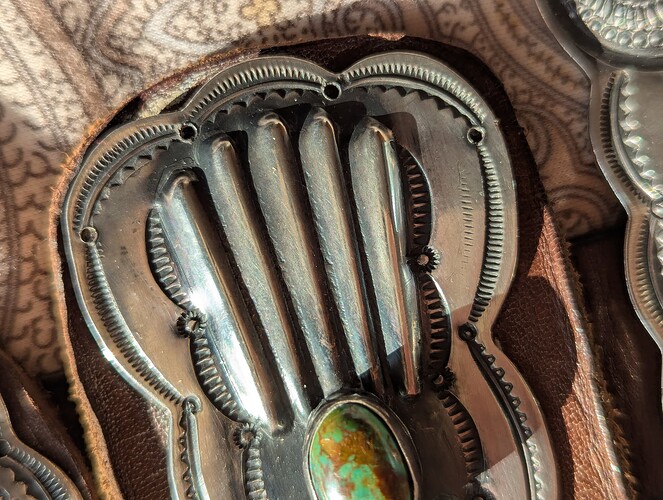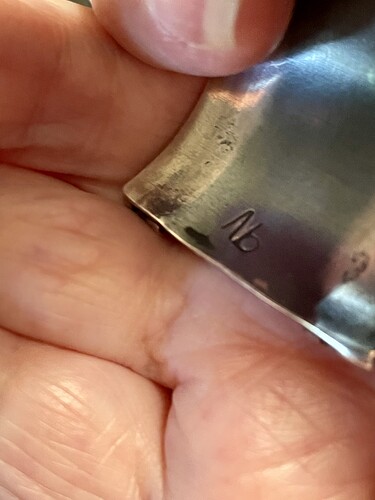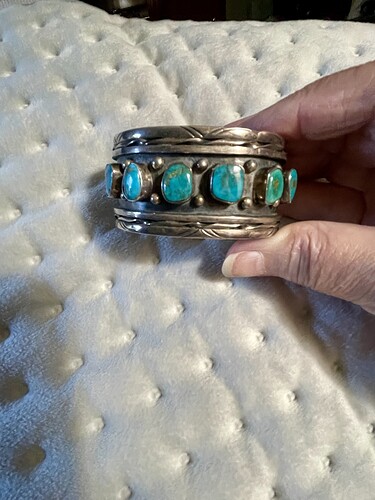That’s interesting, thanks for letting us know. I don’t think we ever thought he was Navajo. Everything I had read online said he was from Jemez Pueblo.
Yes. According to Schaaf (2013) he is Laguna/Jemez/Zuni, and according to Hougart (2016) he should be Laguna/Zuni because his father is.
Schaaf lists New Laguna, ABQ, NM as current address, where he has surely lived up to 2018, according to a letter of the Native American Artisan Program to the Department of Cultural Affairs. That also shows his (hopefully) current address ![]()
Curious and looking forward to get his reply. Used his postal mail address as I found it inappropriate to call him.
I think I have a ring that might be made by him. I bought it a very, very long time ago. When I get home I’ll have to check. I know it’s the same last name.
Looks like he has crafted a lot of different arts - belts, pendants, rings, bracelets etc.
Hello @Jiangxi_cn , very welcome, this is how a good community works. Happy you could solve a riddle. It’s a very nice ring. Maybe this is how the mountains look in New Mexico.
Seeing you are from China, do you maybe have knowledge where my apple-green turquoise might have come from?
I believe it might be Yungai Temple Mine turquoise (Cloud Mountain turquoise) but have little knowledge on this. If you want, please comment in the linked topic. Thanks, Jiangxi.
Unfortunately, I’m also not familiar with Chinese turquoise, and there are so many ways to fake Chinese turquoise, so I turned to Navajo turquoise jewelry.
Finally some sunshine here. Some photos following the @Ravenscry stamp work photography standard (sorry, mobile phone photos only, this time, still … Google Pixel photos are sooo good):
This last one kept me scratching my head. Anyone a clue what that is? Did not want to pull too hard to remove these filaments …
Very nice photos @gt75! The filaments are likely stray fibers from the polishing wheels which got caught between the bezel cup and Concho when the piece was last polished on a polishing lathe.
Thanks a lot, Michael. Wondering … why are both ends of the two filaments stuck?
And now I believe that I have found one of the makers of my cuff and I’m guessing the second hallmark is possibly a relative. Thanks ![]()
Honestly don’t know @gt75. Something to do with the physics of the high speed rotation of the polishing wheels possibly. Typically these filament fragments are from the heavy thread binding the buffing wheels together.
I don’t think it would hurt to carefully pull them out with a pair of needle nosed pliers, as long as you take care not to touch scratch or mar the surface of the silver during the process.
Done, no scratches ![]()
Interestingly, the ligaments have been really deep in below the bezel cup, up to ¾" deep.
The bezel cup is ‘sweat soldered’ on by applying solder in advance to the bottom rear of the cup placing it in the desired position and then applying heat evenly to the assembly allowing the solder to create a capillary bond between the bottom of the bezel cup, and the concho. This area only has to be about 7 -8 mm in diameter to create the necessary bond, leaving the remainder of the space under the bezel cup free.














